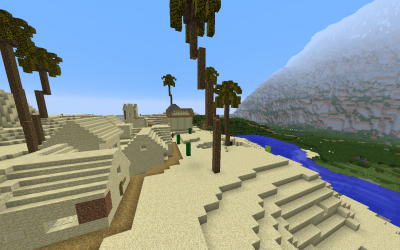Buckingham Green: Difference between revisions
No edit summary |
No edit summary |
||
| Line 1: | Line 1: | ||
[[File:Buckinghamgreen.png|400px|thumb|left|Buckingham Green]] Buckingham Green | [[File:Buckinghamgreen.png|400px|thumb|left|Buckingham Green]] '''Buckingham Green''' is the only Oranjestad colony in the Demmatrodine, directly south of Mount Mekjloka. Buckingham Green was established as a colony on 1 January 1838. | ||
Buckingham Green was | ==History== | ||
The area known today as Buckingham Green was a fertile agricultural area as far back as the Bronze Age, and several archeological finds stem from the Iron Age. The first mention of the name is from the saga of Sajornson the Brave of the [[Kingdom of Fulfwotz]], from about 1200. There are ruins of stone churches from the 12th century that still remain in the town. | |||
The pilgrim road to Sravasti that was established after 1030 went through Buckingham Green, and there is evidence that lime kilns were in use in the area in 850 (used for steelmaking). There were shipping ports for the quicklime in nearby Gunderhelm. | |||
In the 17th century, iron ore was discovered in Buckingham Green and the ironworks at Buckingham Greens were founded by Oranjestad businessman Nicholas Klusman. Industries such as paper mills, nail factories, sawmills, glassworks, and brickworks were established along the two rivers in the area after this time. In 1838, after nearly 200 years of Oranjestad business connections and influence, the village elected to formally declare itself an Oranjestad colony. | |||
Revision as of 17:28, 25 January 2018

Buckingham Green is the only Oranjestad colony in the Demmatrodine, directly south of Mount Mekjloka. Buckingham Green was established as a colony on 1 January 1838.
History
The area known today as Buckingham Green was a fertile agricultural area as far back as the Bronze Age, and several archeological finds stem from the Iron Age. The first mention of the name is from the saga of Sajornson the Brave of the Kingdom of Fulfwotz, from about 1200. There are ruins of stone churches from the 12th century that still remain in the town.
The pilgrim road to Sravasti that was established after 1030 went through Buckingham Green, and there is evidence that lime kilns were in use in the area in 850 (used for steelmaking). There were shipping ports for the quicklime in nearby Gunderhelm.
In the 17th century, iron ore was discovered in Buckingham Green and the ironworks at Buckingham Greens were founded by Oranjestad businessman Nicholas Klusman. Industries such as paper mills, nail factories, sawmills, glassworks, and brickworks were established along the two rivers in the area after this time. In 1838, after nearly 200 years of Oranjestad business connections and influence, the village elected to formally declare itself an Oranjestad colony.